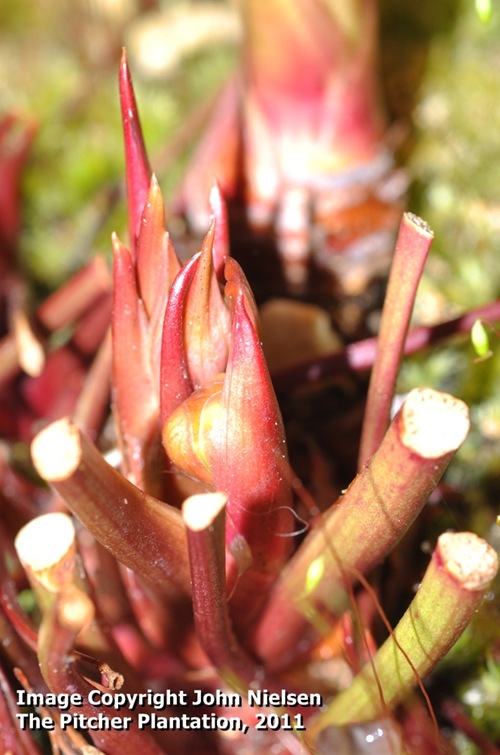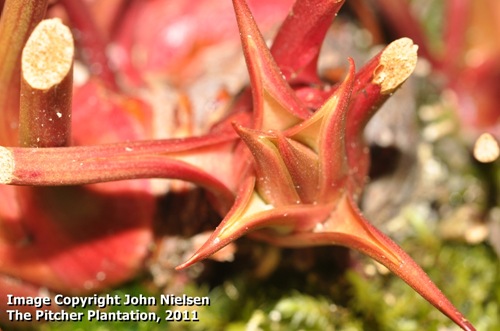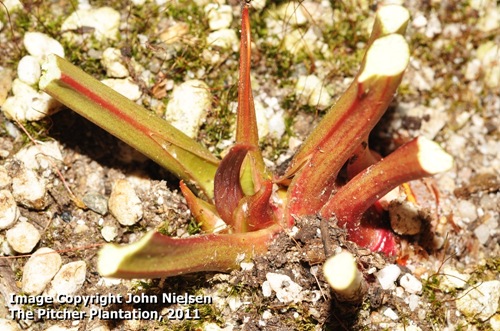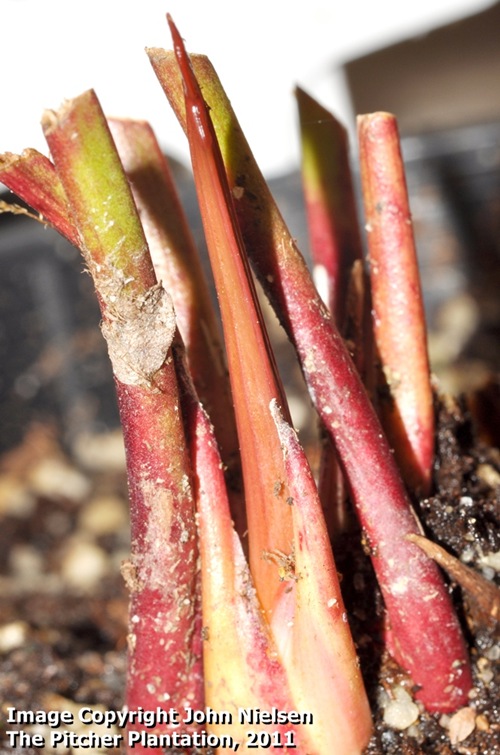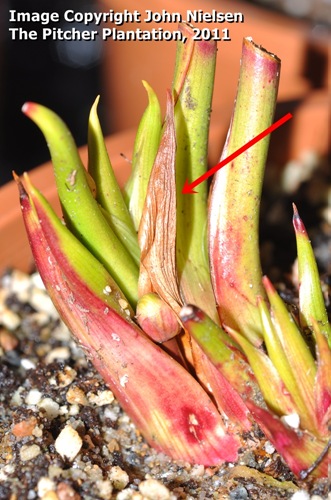With spring comes the anticipation of how well your plant will perform in the season ahead. One question often burns at this time of year: will my plant flower or not? Here’s a couple of sure-fire ways to tell.
During winter, Sarracenia do not form leaves per se, rather, they form sheath-like structures apparently called scales that wrap tightly around the growth point underneath. These scales are quite different to leaves in their structure and are often found on deciduous plants (apples and persimmons being examples that comes to mind). The structure of these scales, and what shape they form over the growth point of your Sarracenia, are what will tell you if your plant is about to flower.
The shape of the growth point is perhaps the easiest way. Looking down onto the growth point, do the scales form a circular shape or an oblong shape? If they form an oblong shape and are somewhat elongated, your plant is bound to be producing a flower bud. Here’s an example of an oblong-shaped growth point on one of my Sarracenia flava:
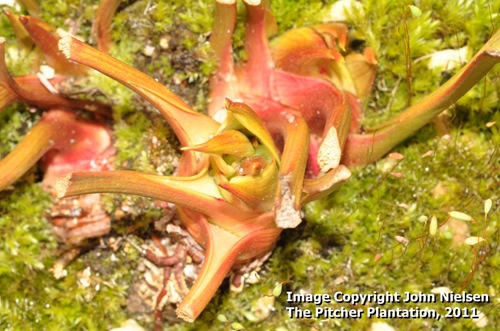 And another (note scale elongation):
And another (note scale elongation):
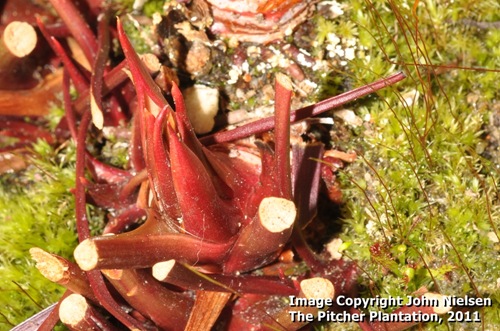 And another (again elongation):
And another (again elongation):
And here are some non-flowering growth point. Notice how the scales form a structure that is more-or-less circular and how the scales are not so elongated?
If a growth point looks a little elongated (like the below), there is still another trick you can use:
The appearance of the scales themselves is also informative (and actually produces the shape differences discussed above). Those associated with flowers are thinner and much less fleshy than normal dormant sheaths. Their texture can be almost papery on large plants. Their structure is also very different, almost looking like a shell. In contrast, scales from non-flowering plants are almost tubular and quite fleshy. To show you what I mean, the below picture compares a flower-associated scale (left) with one from a non-flowering plant (centre) and normal pitcher petiole (right):
Interestingly, scales associated with flower can die or turn brown during winter (especially if the plant has been repotted too early in my experience, but not always). Here’s an example of this happening to a S. flava var rubricorpora (arrowed):
This makes them very obvious within the growth point. I tend to remove them for hygiene, but noticed that the flowers they protect invariably aborted. Here’s an aborted flower on my Sarracenia flava var. ornata “Biddlecombe Red Flush” caused by me pulling off a dead scale. Also note how flowering may split a growth point in two:
Next year, I’ll leave them alone and see if I get better results.
